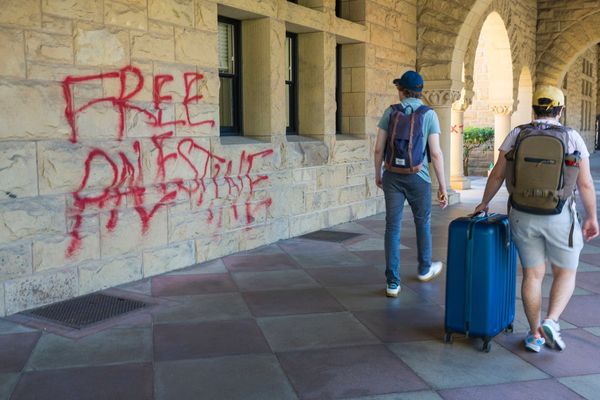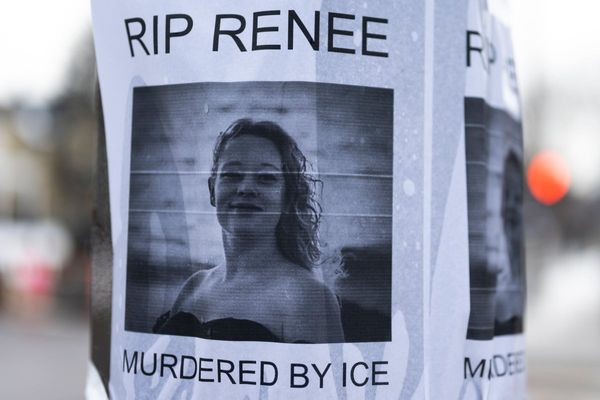
Hundreds of Australians experiencing homelessness are dying more than 30 years prematurely in a nationwide crisis fuelled by despair, critical housing shortages, a breakdown in health provision, violence on the streets and failures of the justice system.
A 12-month Guardian Australia investigation identifying and examining more than 600 cases has found people experiencing homelessness are dying at an average age of 44, a shocking life expectancy gap that experts say is worse than any other disadvantaged group in the country.
Using analysis of hidden death reports to state and territory coroners, a review of 10 years’ worth of publicly available inquest findings, and interviews with dozens of homeless Australians, victims’ families, frontline support workers and researchers, the Guardian has found many of the deaths were both preventable and inextricably linked to the critical undersupply of housing and support services.
Despite this, documents show federal and state governments rejected or ignored a push from the homelessness sector in 2021 to take even the basic step of counting homelessness deaths, a measure adopted in the UK to understand the scale of the problem and formulate policy responses.
Guardian Australia’s investigation found that suicide and overdose are major drivers of deaths among those experiencing homelessness.
They accounted for one-fifth and one-third of deaths respectively, according to an analysis of 627 known homelessness deaths reported to the coroner between January 2010 and December 2020.
Researchers describe these as “deaths of despair” and say they are directly connected to the trauma and desperation of homelessness, and compounded by the vast waits for emergency and public housing.
The investigation also revealed deep systemic failings are fuelling the deaths, including:
Rough sleepers who present as suicidal to hospitals are being turned away or discharged back into homelessness due to a lack of beds, emergency housing and mental healthcare availability. In two cases identified by the Guardian, homeless Indigenous men linked their hospital presentation directly to their homelessness. One told staff: “It is hard to find a reason to live when you have nowhere to live.” They were discharged and found dead a short time later.
Rough sleepers are dying needlessly after encounters with police and the justice system on trivial matters, which lead to use of force or deaths in custody. In at least four cases seen by the Guardian, deaths occurred after arrests for minor public order offences, such as drinking in public and public urination.
Frontline workers say the chronic underfunding of specialised homelessness health services means easily treatable injuries and illnesses are being missed in early stages. This is compounding the significant toll homelessness causes on physical and mental health.
Homeless Australians are being subjected to brutal, sometimes fatal violence while sleeping rough, and being found in parks, squats and on the street shot, stabbed or bashed.
In one case, that of Sydney rough sleeper Roger Davies, police decided there were “no suspicious circumstances” despite evidence he had sustained fractures to nine ribs about the time he died and had complained of being subjected to violence and constant robberies while sleeping in a burnt-out squat house in Granville. They then failed to notify his family until more than two years after Davies was buried in a pauper’s grave.
In Western Australia, Indigenous families say the state government is evicting public housing residents even when it knows this will lead to homelessness. Guardian Australia is aware of at least two families whose loved ones died by suicide shortly after losing housing and becoming homeless. The state’s department of communities said terminations are sought only as a “last resort” and that they provide support to tenants facing eviction.
Indigenous Australians are also vastly overrepresented among the homeless deaths examined by the Guardian. About 20% of the 627 reported deaths involved an Aboriginal or Torres Strait Islander person, despite Indigenous Australians making up only 3.2% of the general population.
Dulcie Nannup, an Indigenous woman, says her experience of homelessness compromised her health and left her in a constant state of anxiety, fearing for her and her children’s safety.
Nannup became homeless in Perth in 2020 after being forced to leave an overcrowded and unsafe house to protect her children. By that stage she had been on the state’s public housing waiting list for four years.
She and her children slept in her car. When the car broke down, they slept at the beach.
“It was pretty dangerous,” she said. “It was kind of hard to protect us all, me and my children. I was scared. When I slept on the streets I was scared that someone would come up and kill us or something. I used to just think bad things.”

Nannup was forced to undergo triple-bypass surgery, something she associates with the constant stress and anxiety of homelessness. She is now also awaiting dialysis.
“It needs to be heard out there,” she said. “I think a lot of people need to know how unsafe it is for [people experiencing] homelessness, for families out there, mothers and children, who went through what I went through.
“It needs to be told out there. They need to know it’s unsafe to be homeless.”
Blind to the problem
The Australian government does not count the number of homelessness deaths each year, setting it apart from other western nations.
Correspondence seen by the Guardian show the former federal government and state governments rejected or ignored the homelessness sector’s pleas in 2021 to build an annual tally, including by commissioning the Australian Institute of Health and Welfare to develop a reporting framework for hospitals, homelessness services and coroners.
That has left Australia blind to the problem and rendered the majority of homelessness deaths invisible.
“It’s a shocking state of affairs,” says Mark Furlong, a scholar who examined the lack of data on Australian homelessness deaths in 2021. “We don’t know how big the problem is and, unless the problem is recognised, it’s not dealt with.”
In an attempt to understand what is driving rough sleeper deaths, the Guardian reviewed coronial inquest decisions over 10 years related to homelessness and conducted interviews with dozens of Australians sleeping rough, victims’ families, frontline workers and researchers.

It also accessed hidden reports of homelessness deaths, which were notified to the coroner but not explored through an inquest, between January 2010 and December 2020. The reports were analysed by researchers at the National Coronial Information System, acting on behalf of the Guardian.
They identified 627 reported deaths – more than one death a week – where the deceased was described as homeless, itinerant, squatting or having no fixed address.
That is a vast undercount because deaths are only reported to the coroner in limited circumstances. Even when they are reported, information about a person’s housing status is often unclear or mischaracterised.
But the data obtained by the Guardian does give insight into the role suicide and overdoses are playing in killing rough sleepers.
About 20%, or 130 of the 627 deaths, could be attributed to intentional self-harm. Roughly 200 were caused by pharmaceutical drug toxicity.
‘They have no hope’
Homelessness Australia’s chief executive, Kate Colvin, said suicides and overdoses, known as deaths of despair, could not be separated from the loss of hope homelessness brought.
“One of the main causes of death is the despair that people feel. They have no hope,” she said. “They know it is so hard to be rehoused and that makes people’s hope for the future dissipate.
“The day-to-day existence is hard on the street. People are vulnerable to violence and exploitation and it is very difficult and traumatic, and then without hope for the future, my expectation is that the biggest killer is direct consequences of despair, such as suicide and drug overdose.”
The average age of death among the 627 cases was 45.2 for men and 40.1 for women.
That means those experiencing homelessness have a life expectancy gap of more than three decades compared with the median age at death for the general population, which is 79 years for men and 85 years for women.
Despite the limitations of the data, the Guardian’s investigation shows, for the first time, that this massive life expectancy gap exists across Australia.
The finding is broadly in line with comprehensive but localised studies in Perth and Sydney, and government data in the UK, which also reveal a vast life expectancy gap.
Last year a Macquarie University analysis of 324 deaths of people experiencing homelessness found their median age at death was 50.7, with overdoses and suicides accounting for 24.1% and 6.8% of deaths respectively.
The Home2Health team, responsible for the Perth research, examined 360 deaths in the city alone between 2020 and 2022.
The research team, headed by the University of Notre Dame Australia professor Lisa Wood, crosschecked multiple records of death, including hospital records and the register of births, deaths and marriages, against a pool of more than 8,500 people known to have experienced homelessness, built from homelessness services’ client lists.
The median age at death was 50 years.
“When there’s a three-decade life expectancy gap, and no other group – even the other most disadvantaged population group in the country – is anywhere near that, [homelessness] is clearly the common denominator,” Wood said.
“If we had more transparency around life expectancy then we could start to see well are we seeing any shifts … in people who are getting rapid housing, who are getting specialist healthcare, who are getting trauma counselling.
“If it remains invisible, it’s going to be hard to see whether we are making progress at all.”
• In Australia, the crisis support service Lifeline is 13 11 14. Other international helplines can be found at befrienders.org







